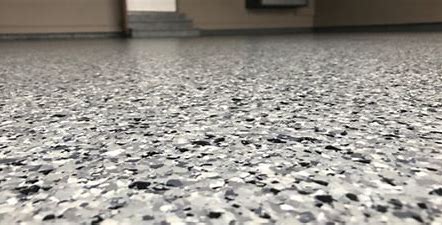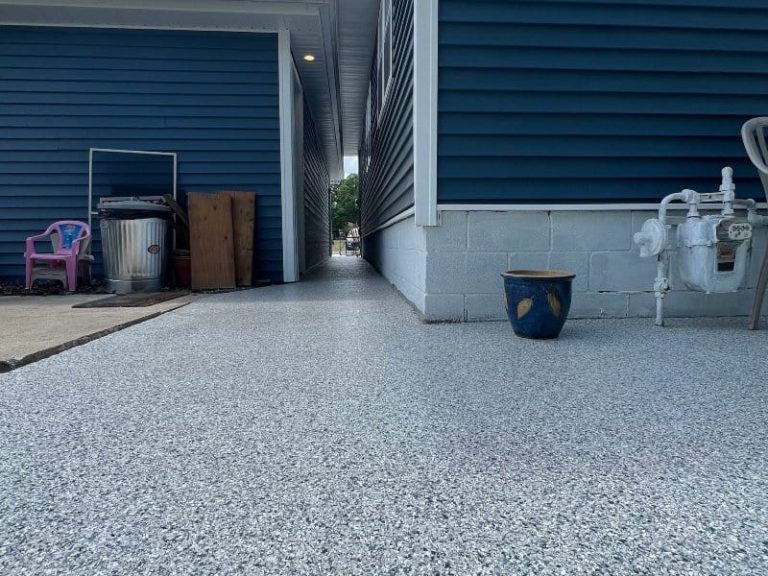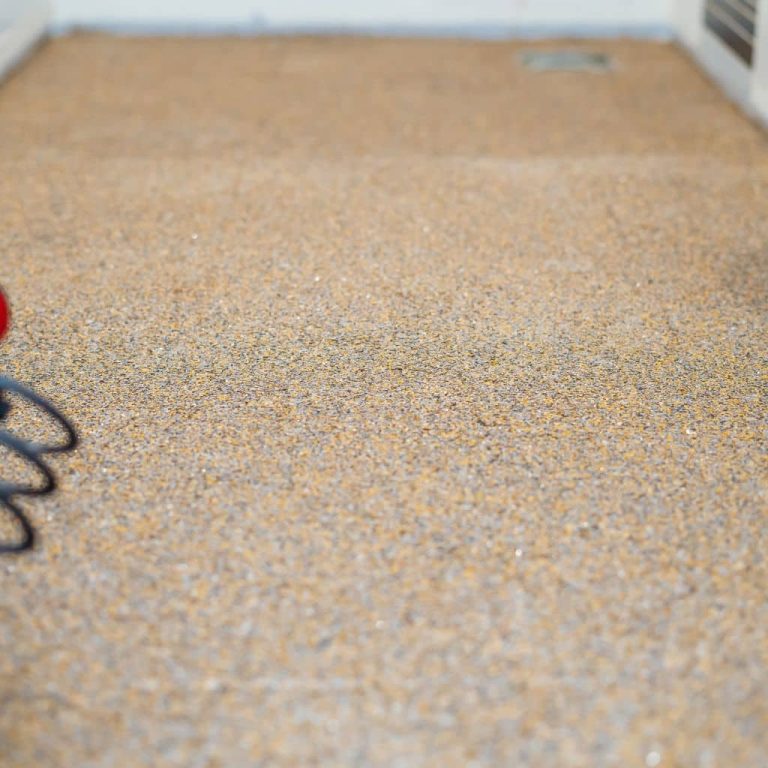When it comes to garage floor coatings, durability is one of the top priorities. After all, nobody wants to invest in a brand-new floor coating only to see it fade, crack, or need replacement within a few short years. There are many options on the market—commonly epoxy, polyurea, and polyaspartic—and they all promise various benefits. In this post, we’ll explore which garage floor coating lasts the longest, the reasons behind that longevity, and the average cost you can expect if you go the polyurea route. We’ll also share insights from concrete coating expert, Crayton Caudill, a partner at Level 10 Coatings serving Indiana and Chicagoland. Whether you’re planning a new build or renovating an existing garage floor, this guide will help you decide on the best and most durable flooring solution for your needs.
Understanding the Importance of Garage Floor Coatings
Many homeowners view a garage floor coating as purely aesthetic—after all, a freshly coated floor certainly transforms a garage from a dull, utilitarian space into a more inviting and polished environment. But there’s more to floor coatings than meets the eye. The right product can protect your concrete floor from moisture, prevent chemical damage from automotive fluids, and reduce wear and tear caused by temperature extremes and daily use.
Particularly in climates where winter can be harsh (like much of Indiana and the Chicagoland area), concrete is subject to freezing and thawing cycles that weaken its structural integrity over time. A high-quality coating serves as a protective barrier, helping the concrete remain intact and damage-free for much longer.
Common Types of Garage Floor Coatings
Epoxy Coatings
Epoxy has been a popular choice for decades. It’s typically composed of a resin and a hardener that chemically bond to the concrete surface, creating a hardened protective layer. When installed properly, epoxy coatings can last a number of years—often up to 7 or 10—making them a fairly sturdy option. They also come in various colors and finishes, including decorative flake blends that offer some texture and aesthetic appeal.
One of the main downsides of epoxy is that it can yellow or fade over time, especially when exposed to sunlight. This discoloration is generally attributed to UV exposure, even if the garage has windows or the door is open for some part of the day. Over time, homeowners who choose epoxy might find themselves needing to re-coat their garage floors sooner than they had hoped. While epoxy remains a budget-friendly solution, its shorter lifespan and tendency to discolor may make it less appealing if long-term durability is your main criterion.
Polyurea and Polyaspartic Coatings
In recent years, polyurea and polyaspartic coatings have become the “gold standard” in the industry. These coatings are more flexible than epoxy, which helps them withstand temperature variations and foot or vehicle traffic without cracking. They also have strong chemical resistance, protecting the concrete from oil and gas spills that are common in a garage environment.
According to real-world case studies and the experience of industry professionals like Crayton Caudill, polyurea polyaspartic coatings can last 20 to 25 years—roughly double or even triple the lifespan of a typical epoxy floor. Moreover, unlike epoxy, they’re designed to resist yellowing and fading from UV exposure. This makes them a superb option for garages, patios, commercial spaces, and anywhere else that sees plenty of sunlight.
Why Polyurea Polyaspartic Coatings Last Longer
If you’re curious about the science behind polyurea polyaspartic’s extended lifespan, it primarily comes down to its unique chemical composition. Polyurea itself is an elastomer—a material that is not just tough but also flexible enough to handle expansions and contractions of concrete through different seasons. Polyaspartic is a type of aliphatic polyurea, which is highly resistant to UV damage and weathering.
When combined, polyurea and polyaspartic create a coating that:
- Cures Quickly: These coatings generally cure faster than epoxy, which means there’s less downtime for your garage. Many installers can complete the process in as little as one day, depending on the size and condition of the floor.
- Adheres Strongly: The bond to the concrete is remarkably strong. A standard professional installation involves diamond grinding or shot blasting the concrete to ensure proper surface preparation, which enhances adhesion.
- Maintains Appearance: UV-resistant formulations ensure the color and finish stay true for many years, eliminating the common yellowing problems seen with epoxy.
- Handles Extreme Temperatures: This can be particularly important in regions with hot summers and cold winters. The coating’s flexible nature enables it to handle the stress of concrete expanding and contracting without cracking.
Factors That Affect Garage Floor Coating Durability
While polyurea polyaspartic coatings have a strong track record of lasting 20 to 25 years, that doesn’t mean every coated floor will meet or exceed that lifespan automatically. Proper installation is critical. For instance:
- Surface Preparation: No matter how high-quality the product is, if the concrete isn’t prepared correctly—through methods like diamond grinding—the coating may not adhere well, leading to peeling or cracking down the road.
- Moisture Levels: High moisture content in concrete, or a lack of vapor barriers, can lead to issues with coatings. A professional installer will check for these before applying the product.
- Ongoing Maintenance: While a coated floor generally requires less upkeep, basic maintenance like cleaning up oil spills, sweeping regularly, and mopping occasionally can extend its life.
- Quality of Installation: Experience matters. An installation team that knows the ins and outs of polyurea polyaspartic coatings will likely produce a floor that lasts longer and maintains a cleaner appearance.
Cost Considerations for Polyurea Garage Floor Coatings
If you’ve considered epoxy in the past, you might be wondering how much more you’ll pay for polyurea. Depending on factors such as size of the space, the condition of the concrete, and whether or not you’re coating vertical surfaces like steps or walls (often referred to as “verticals”), the cost typically runs about 7 to 12 dollars per square foot. While this price range might be higher than epoxy, the longer lifespan and reduced maintenance often make polyurea polyaspartic coatings a worthwhile investment.
Factors Influencing the Final Cost
- Square Footage: Larger garages will often enjoy a slightly lower per-square-foot rate since the installer can distribute material and labor more efficiently.
- Concrete Condition: If the existing floor has cracks, spalling, or moisture damage, repairing these issues before coating will add to the total cost.
- Interior vs. Exterior: Exterior applications may require additional UV-protective coatings or treatments, possibly changing the total investment.
- Verticals or Extras: Some homeowners like the seamless look of having the walls or steps coated. This adds more surface area, increasing both materials and labor.
- Location and Accessibility: If your garage or space is difficult to access, has limited power availability, or requires special arrangements for disposal of old materials, you could see an increase in labor and setup fees.
The Installation Process
To appreciate the value you’re getting, it helps to understand the steps involved in installing a polyurea polyaspartic coating:
- Inspection: A professional installer assesses the concrete, noting any damage or moisture issues.
- Prep Work: The surface is typically prepared through mechanical grinding or shot blasting. This removes surface contaminants and opens up the pores of the concrete so the coating can adhere strongly.
- Repairs: Cracks or holes are filled with specialized repair materials that are compatible with polyurea.
- Base Coat Application: A polyurea base coat is applied to create a strong bond with the prepared surface.
- Broadcasting Flakes (Optional): Many choose decorative flake systems for added texture, slip resistance, and aesthetics. This step involves broadcasting vinyl flakes into the base coat while it’s still wet.
- Scraping and Cleanup: After the base coat cures, the installer scrapes and vacuums up any excess flakes, ensuring a uniform surface.
- Top Coat Application: Finally, a polyaspartic or polyurea top coat is applied to seal the system, providing the durability and UV resistance that characterizes these coatings.
The entire process can often be completed in a single day. By contrast, epoxy systems might require two or three days to cure fully.
Why This Matters for Indiana & Chicagoland Residents
In regions like Indiana and the Chicagoland area, extreme temperature shifts and salted roads can be extremely tough on concrete floors. Whether you’re dealing with the humidity of summer or the freeze-thaw cycles of winter, concrete that isn’t protected can pit, crack, or even develop structural issues over time. Salt dragged in on your car tires during winter accelerates surface damage and can reduce the lifespan of any coating that isn’t specifically designed to handle harsh conditions.
Polyurea polyaspartic coatings offer an excellent defense against these environmental factors. They’re able to handle the sudden temperature swings without delaminating, and their chemical resistance helps them stand up to salts and de-icing chemicals. This resilience is part of the reason they’re touted to last so long, making them a top pick for serious homeowners who prefer a one-and-done solution.
Epoxy vs. Polyurea: The Bottom Line
- Longevity: Epoxy floors can last up to a decade if installed properly but may fade and require re-coating. Polyurea polyaspartic, on the other hand, often remains in great shape for 20 to 25 years.
- UV Resistance: Epoxy tends to yellow, particularly in direct sunlight. Polyurea polyaspartic coatings are formulated to resist fading and yellowing.
- Installation Time: Epoxy might take several days of curing before the floor is ready to use. Polyurea polyaspartic can often be finished in a single day.
- Cost: Polyurea polyaspartic will usually cost more upfront, but the extended lifespan and reduced need for maintenance or re-coating can make it more cost-effective in the long run.
Additional Factors to Weigh
- Appearance: If you’re purely concerned with aesthetics, either system can be custom-tailored with flakes, metallic pigments, or solid colors. You may, however, notice that polyurea top coats maintain their color more faithfully over time.
- Chemical Resistance: All garage floors take a beating from vehicle fluids, but polyurea polyaspartic coatings generally offer better chemical and abrasion resistance.
- Speed of Project Completion: If you need your garage back quickly, the fast cure time of polyurea polyaspartic is a strong selling point.
Making the Right Choice for Your Garage
Ultimately, choosing the best garage floor coating comes down to your budget, how you use your garage, and how important it is to you to minimize long-term maintenance. If you’re okay with potentially re-coating in 7 to 10 years and saving some money now, epoxy could be an acceptable choice. However, if you’re looking for a high-performance floor that remains in top shape for two to three decades, polyurea polyaspartic coatings are generally the best bet. The up-front cost of 7 to 12 dollars per square foot might be higher, but the peace of mind and longevity often justify the investment.
Of course, whichever route you choose, make sure you work with an experienced installer like Level 10 Coatings. Trained professionals can spot potential issues before they become costly headaches, and they’ll ensure your new floor is installed using the best practices—giving you the maximum return on your investment.
Conclusion
If you’re seeking a garage floor coating that stands the test of time, offers robust protection against the elements, and looks great doing it, polyurea polyaspartic is hard to beat. In many cases, it lasts far longer than epoxy, resists yellowing, and handles the harsh conditions found in areas like Indiana and Chicagoland with ease. Although the initial cost is higher, you’re essentially paying for a longer lifespan, exceptional durability, and minimized maintenance headaches down the road.
If you have more questions or want to learn how to customize a garage coating solution for your home, consider reaching out to a reputable installer like Crayton Caudill at Level 10 Coatings, who has the experience and knowledge to guide you toward the right choice. With the correct product, a professional installation, and a little maintenance, your garage floor can remain a point of pride for decades to come.


